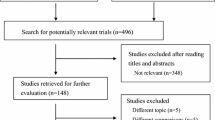INTRODUCTION
Oral metronidazole has been previously demonstrated to decrease postoperative pain after open diathermy hemorrhoidectomy. The current study investigates the efficacy of topical metronidazole (10 percent) in reducing postoperative pain and promoting wound healing after Harmonic Scalpel® hemorrhoidectomy.
METHODS
A prospective, randomized trial was conducted to compare posthemorrhoidectomy pain and wound healing with use of topical metronidazole (10 percent) vs. placebo carrier, applied to the surgical site. Surgical indications included grade 3 or 4 internal or external hemorrhoidal disease, with or without a fissure-in-ano. Pain was assessed using a visual analog score (VAS) preoperatively and on postoperative days 1, 2, 7, 14, and 28. Twenty-four-hour narcotic use (hydrocodone 10 mg) was recorded on postoperative days 1, 2, 7, 14, and 28. Digital photographs of the surgical site were taken at 14 days postoperatively. The photographs were independently ranked by three blinded observers according to a) postoperative edema, b) primary vs. secondary healing, and c) overall wound healing.
RESULTS
Twenty patients were randomized in a prospective manner, ten to the topical 10 percent metronidazole group and ten to the placebo carrier group. Patients in the topical metronidazole group experienced significantly less postoperative pain at day 7 (VAS ± SEM, 3.4 ± 0.4 vs. 6.3 ± 0.5; P = 0.002) and day 14 (1.0 ± 0.4 vs. 3.2 ± 0.7, P = 0.02). There was no statistical difference in narcotic analgesic requirements between groups. In the metronidazole group, postoperative edema was ranked significantly lower (mean score, 3.0 vs. 7.0, P < 0.01) and overall wound healing ranked significantly better (4.0 vs. 7.0, P = 0.03) than in controls.
CONCLUSION
Topical 10 percent metronidazole significantly reduces posthemorrhoidectomy discomfort at days 7 and 14 postoperatively. Postoperative edema is reduced and overall healing is improved, compared with that of carrier controls.




Similar content being viewed by others
References
DN Armstrong C Frankum (2002) ArticleTitleSchertzer, Ambroze WL, ME Orangio GR. Harmonic Scalpel® hemorrhoidectomy: five hundred consecutive cases Dis Colon Rectum 45 354–9
SD McCarus (1996) ArticleTitlePhysiologic mechanism of the ultrasonically activated Harmonic Scalpel® J Am Assoc Gynecol Laparosc 3 601–8
DN Armstrong WL Ambroze (2001) ArticleTitleSchertzer ME Orangio GR. Harmonic Scalpel® vs. electrocautery hemorrhoidectomy: a prospective evaluation Dis Colon Rectum 44 558–64
CC Chung JP Ha YP Tai WW Tsang MK Li (2002) ArticleTitleDouble blind, randomized trial comparing Harmonic Scalpel™ hemorrhoidectomy, bipolar scissors hemorrhoidectomy and scissors excision: ligation technique Dis Colon Rectum 45 789–94
Z Dreznik E Ramadan (2001) ArticleTitleHarmonic scalpel hemorrhoidectomy: preliminary result of a new alternative method Dis Colon Rectum 44 A36
YH Ho F Seow-Choen M Tan AF Leong (1997) ArticleTitleRandomized controlled trial of open and closed haemorrhoidectomy Br J Surg 84 1729–30
JA Neto FA Quilici F Cordeiro JA Reis (1992) ArticleTitleOpen versus semi-open hemorrhoidectomy: a random trial Int Surg 77 84–90
SB Hosch WT Knoefel U Pichlmeier et al. (1998) ArticleTitleSurgical treatment of piles: prospective, randomized study of Parks vs. Milligan-Morgan hemorrhoidectomy Dis Colon Rectum 41 159–64
EA Carapeti MA Kamm PJ McDonald RK Phillips (1998) ArticleTitleDouble blind randomized controlled trial the effect of metronidazole on pain after day case hemorrhoidectomy Lancet 351 169–72
L Balfour SG Stojkovic ID Botterill DA Burke P Finan PM Sagar (2002) ArticleTitleA randomized, double-blind trial of the effect of metronidazole on pain after closed hemorrhoidectomy Dis Colon Rectum 45 1186–91
Metrocream. In: Physicians desk reference 2003. 57th ed. Montvale: Thomson PDR, 2003:1383–4.
RJ Guy F Seow-Choen (2003) ArticleTitleSeptic complications after treatment of hemorrhoids Br J Surg 90 147–56
F Seow-Choen HC Low (1995) ArticleTitleProspective randomized study of radical versus four piles haemorrhoidectomy for symptomatic large circumferential prolapsed piles Br J Surg 82 188–9
A Lacerda-Filho JR Cunha-Melo (1997) ArticleTitleOutpatient haemorrhoidectomy under local anaesthesia Eur J Surg 163 935–40
JG Buls SM Goldberg (1978) ArticleTitleModern management of hemorrhoids Surg Clin North Am 58 469–78
R Bleday JP Pena DA Rothenberger SM Goldberg JG Buls (1992) ArticleTitleSymptomatic hemorrhoids: current incidence and complications of operative therapy Dis Colon Rectum 35 477–81
PR Paula Particlede MB Speranzini HC Hamzagic et al. (1991) ArticleTitleBacteriology of the anal wound after open hemorrhoidectomy: qualitative and quantitative analysis Dis Colon Rectum 34 664–9
I Brook EH Frazier (1996) ArticleTitleAerobic and anaerobic microbiology of infected haemorrhoids Am J Gastrenterol 91 333–5
J Jakobovits MM Schuster (1984) ArticleTitleMetronidazole therapy for Crohn’s Disease associated fistulae Am J Gastroenterol 79 533–40
LJ Brandt LH Bernstein SJ Baley et al. (1982) ArticleTitleMetronidazole therapy for perineal Crohn’s disease: a follow up study Gastroenterology 83 383–7
SJ McClane JL Rombeau (2001) ArticleTitleAnorectal Crohn’s disease Surg Clin North Am 81 169–83
Metronidazole. In: American hospital formulary service drug information. Bethesda: American Society of Health System Pharmacists, 2002:864–75.
MV Dahl HI Katz GG Krueger et al. (1998) ArticleTitleTopical metronidazole maintains remissions of rosacea Arch Dermatol 134 679–83
AK Gupta M Chaudhry (2002) ArticleTitleTopical metronidazole for rosacea Skin Therapy Lett 7 1–3
Author information
Authors and Affiliations
Corresponding author
About this article
Cite this article
Nicholson, T., Armstrong, D. Topical Metronidazole (10 Percent) Decreases Posthemorrhoidectomy Pain and Improves Healing. Dis Colon Rectum 47, 711–718 (2004). https://doi.org/10.1007/s10350-003-0129-z
Published:
Issue Date:
DOI: https://doi.org/10.1007/s10350-003-0129-z




